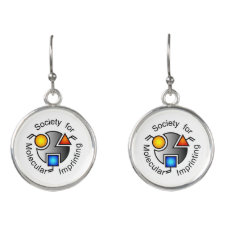
Authors: Yang H, Hu YL, Wang XY, Fu W, Tian HJ, Alam E
Article Title: Investigation on synthesis of ion-imprinted mesoporous adsorbents by using ultrasound- and microwave-assisted preparation and their dynamic adsorption properties on heavy metals.
Publication date: 2019
Journal: Environmental Science and Pollution Research
Volume: 26
Issue: (11)
Page numbers: 10987-10999.
DOI: 10.1007/s11356-019-04436-3
Abstract: Removal of the heavy metal ions in aqueous solution is an important technology for waste water treatment. The effects of using ultrasonic and microwave on synthesizing Pb2+, Zn2+, and Cu2+ imprinted mesoporous adsorbents (Pb-IMA-UM, Zn-IMA-UM, and Cu-IMA-UM) and their dynamic adsorption properties were studied. The microstructure and composition of the ion-imprinted mesoporous adsorbents were discussed in detail by TEM, FTIR, N2 adsorption-desorption, XRD, and EDS. The pore sizes of mesoporous absorbents were improved more uniformly by using ultrasonic agitation than magnetic stirring. The elution efficiency of imprinting ions can be enhanced by microwave elution. Prepared Pb-IMA-UM, Zn-IMA-UM, and Cu-IMA-UM were used for dynamic adsorption study of heavy metals. The detected optimal feed rate was 20.0 mL/min and the influent concentration was 60 mg/L; the equilibrium adsorption capacities of Pb-IMA-UM, Cu-IMA-UM, and Zn-IMA-UM could reach 198 mg/g, 51.5 mg/g, and 57.3 mg/g, respectively. The dynamic regeneration performance of the adsorbent was also investigated with the Cu-IMA-UM sample. The adsorption rate remained above 89% after five dynamic regeneration experiments. At last, the actual wastewater from an electroplating industry was used as the research object. Three groups of dynamic adsorption coefficient contours of Pb-IMA-UM, Zn-IMA-UM, and Cu-IMA-UM were obtained when influents flowed into three adsorption columns separately. The experimental results showed that an ion-imprinted adsorbent had a much better adsorption capacity of imprinted ions under the various metals mixed conditions
Template and target information: lead ion, Pb(II), zinc ion, Zn(II), copper ion, Cu(II)
Author keywords: imprinting, mesoporous, Heavy metal removal, Ultrasound, Microwave, Dynamic adsorption



Join the Society for Molecular Imprinting

New items RSS feed
Sign-up for e-mail updates:
Choose between receiving an occasional newsletter or more frequent e-mail alerts.
Click here to go to the sign-up page.
Is your name elemental or peptidic? Enter your name and find out by clicking either of the buttons below!
Other products you may like:
 MIPdatabase
MIPdatabase









